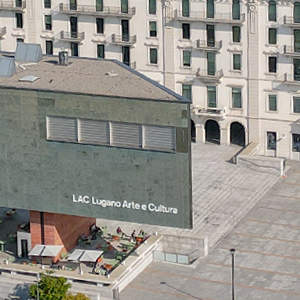

Why the Italian New Tax Resident regime is one of the best available option for UHNWI looking for a jurisdiction where to move (tax) residence.
By Luigi Belluzzo, TEP
The new Italian rule
On March 8, 2017, the Italian Tax Authorities issued Protocol No. 47060 providing for the implementation measures with respect to the special “Italian new tax resident” – a sort of “non –dom” – regime introduced by the Budget Law for 2017, aimed at enhancing investments and attracting high-net-worth individuals to Italy.
In particulare a new article has been introduced within the Italian Tax Consolidated Act: article 24-bis sets the new rule as an option for the new taxpayer resident in Italy who, because of his new residence, can give access to the application of a substitutive tax.
With the Circular Letter 17/E, released on May 23, 2017, the Italian tax authority provides several clarifications and additional guidance for the application of the regime under discussion.
Our experience so far is that with relationship with the central office set by the Italian Tax Administration has been very advantageous. The new regime started and today we have about 180 rulings from the Italian administration related to new taxpayer who opted for art. 24-bis.[1]
Eligibility
According to the law any individual could opt for the new tax regime if the following 2 conditions are met:
- There is a transfer of the tax residence to Italy. According to Italian general tax rule individuals are deemed to be resident in Italy if they meet any of the following condition:
- registration to the Civil Registry of the Resident Population;
- having the place where the individual’s habitual abode is located therefore the residence, according to the Civil Code, in Italy for more that 183 days in the calendar year;
- having the place where an individual has established his principal center of interest the domicile, as defined by the Civil Code, in Italy for more that 183 days in the calendar year.
- The condition of not having been tax resident in Italy on 9 out of 10 years before the moving to Italy is met. This means that the regime is an option for Italian citizen too.
The law requires that the individual option is made in the annual tax return related to the tax year of the transfer or in the year which follows the one of transfer. It is the option in the annual tax return, therefore that the taxpayer must accomplish. Although an option by law, it is strongly recommended that the taxpayer prepare and file, with the assistance of a specialized firm such us ours, a specific ruling before the Italian Tax Administration, according to Protocol N. 47060, with the aim to obtain a clear answer about the meeting of the condition to enter the new Italian New Tax Resident Regime.
Together with the ruling request, the taxpayer must submit a specific Check List – following guidelines issued by the Italian Tax Authority – and, when relevant, supporting documentation. Should the taxpayer decides to enter the new regime without the ruling procedure it is compulsory to prepare all relevant documentation to prove eligibility to be filed with the tax return.
Starting the process, the taxpayer may elect – in the ruling request or in the annual income tax return – not to apply the exemption with regard to income from certain countries (“Cherry picking”); in such case, the income is subject to the ordinary rules, including the use of tax credits for the foreign taxes.
As already said, the taxpayer may give power of attorney to a trusted professional in order to be duly represented in the whole process before the Authorities.
Eligibility for non EU passport holders
It is to be underlined that immigration to Italy could be an issue for non EU passport holder. Along the new art. 24-bis, which is setting the legal frame for the new regime – there is a new rule which give access to Italy in the form on an Investor Visa Programme.
The law grants a Schengen Permit to Italy on the basis of an Investor Visa. The new Italian provisions (effectively in place since December 2017) contemplate a two-year special visa regime applicable to non-EU citizens upon entry and permanence in Italy for more than three months.
The new procedure is intended to attract HNWI to Italy in order to increase foreign investments.
The applicant is required to:
- invest at least Euro 2 million in Italian government bonds; OR
- invest at least Euro 1 million in equity instruments (share capital of italian resident and operating companies) orinvest at least Euro 500.000 in the share capital of innovative start-up; OR
- donate Euro 1 million to philanthropic projects (culture, education, migration management, scientific research and recovery of artistic assets).
The Investor Visa is revocable if the investment and/or donation has not been made within 3 months as of the date of entry in Italy, or if the investment is subsequently disposed of during the validity of the Visa period.
The whole process is ruled by the civil law environment but with some useful specific simplifications with a centralised Secretariat (formed at the DG for Industrial Policy of the Ministry of Economic Development) acting as single contact point for visa applicants.
Our firm has been one of the first mover in Italy for immigration and Investor Visa Programme associated to the Italian New Tax Resident regime. The process could last about 6 months, but usually is shorter if well prepared (practically reduced on a couple of months from formal filing).
Eligibility of family members of the first applicant
The Italian regime can be extended to one or more qualifying family members against the payment of an annual substitute tax of €25,000 per family member benefitting from such a regime. This is an optional regime.
Income (and assets) included in the new regime
Income is deemed to be foreign-sourced and is consequently covered by the lump sum tax when:
- the asset from which the income is derived is located abroad, OR
- the activity through which the income is produced is performed abroad, OR
- the paying entity is resident abroad.
This issues could be quite technical and therefore we recommend, before the process starts, to accurately assess or plan the asset structure, which is not required to be disclosed to the Italian Authorities.
It is important to note that the concept of the localization of assets is also fundamental on the application of Gift and Inheritance Tax. Only assets held abroad are included on yearly the Italian lump sum flat tax related to the new regime.
The (new) taxpayer is going to pay taxes as all residents on the income (and assets) in Italy. It is anyway to be underlined that the Italian regime has not any issue with the remittance. Income held abroad can be remitted to Italy without any restriction and without any (further) taxation.
Effects of the Italian New Tax Resident regime
The rule is clear and as far as the basic conditions are accomplished the taxpayer, by opting for the application of the Italian regime, enjoys of a condition where he or she is subject to taxation in Italy for the worldwide income but:
- All foreign-source income and gains are subject to an annual lump sum tax of €100,000 (for a maximum of15 years);
- Such income and gains are not subject to any additional income taxation, even if remitted to Italy (no remittance principle);
- All Italian source incomes and gains are subject to ordinary taxation;
- Capital gains from qualified participations, as defined by the Italian rules, realised during the first 5 years of the regime are subject to income tax under general rules with the benefits of a foreign tax credit.
Accordingly the taxpayer is not required to pay Italian wealth tax on assets held abroad, currently at 0.2% on financial (IVAFE) and 0.76% on immovable property (IVIE). Furthermore, the application of the substitute tax exempts the taxpayer from all the reporting obligations related to the holding of assets abroad (i.e. the “RW” reporting obligations).
No disclosure to Italian Tax Authorities
There is no necessity to disclose to the Authorities where (foreign) assets are held and how the estate is organized and structured. This is clearly a great advantage of the regime, although the taxpayer must consider that Italy International Cooperation is high (e.g. Fatca or CRS are fully applicable).
Termination and yearly options
The regime is valid and automatically renewed every year for a maximum of 15 tax years on the condition that the tax is duly paid.
It is possible to withdraw from the regime but only once. It is not therefore possible to make option year per year as given by other International regimes (e.g. the UK Res-Not-Dom).
Other regimes and the Italian one
Without any doubt the shape or the world become less flat in the past years. New borders and new issues emerged on the global political arena. International policies tried to curb the run towards offshore regimes and probably the battle has been won by large countries. Room is still available on rules giving a (tax) competitive advantage on the attraction of people and investors, but generally these regimes have been given a maximum duration which, among other factors, certainly are contributing on the impact of International geography of capital and people. Other regimes may work well for the International dwellers, moving from one regime to another. Countries like UK or Portugal could be a “competitor” of the Italian regime, which has been given fair judgments from various authorities, including the EU Commission. Also countries like Switzerland, Cyprus or Malta have interesting legislations.
Our firm is well prepared on giving guidance and comparison also on other regimes, including Asia or America ones, as the Immigration and relocation practice is active both in London and Milan with the support of our offices in Switzerland and Singapore too.
I hope that this short presentation of the new Italian New Tax Resident regime gives to the reader a broad view and the interest to better understand its legal and practical rules. Looking forward to hearing from our International colleagues active on International Wealth Planning structuring.
Legal references in Italy
- Art. 1 (152 – 159) of Law No. 232 of December 11, 2016 (the Budget Law for 2017).
- Art. 24-bis of Presidential Decree No. 917 of December 22, 1986 (Italian Tax Consolidated Act).
- Provision from the Director of the Italian Tax Authority, Protocol No. 47060 of March 8, 2017.
- Interministerial decree of the Minister of Economic Development, with the Minister of Interior and the Minister of Foreign Affairs, published on 21 July 2017;
- Italian Investor Visa Policy guidance, approved on 16 November 2017.
For further information please contact:
Luigi Belluzzo – luigi.belluzzo@belluzzo.net
Alessandro Belluzzo – alessandro.belluzzo@belluzzo.net
Giacomo Francioni – giacomo.francioni@belluzzo.net
Stefano Serbini – stefano.serbini@belluzzo.net
Enrico Santi – enrico.santi@belluzzo.net
[1] The number has been delivered by Italian Government officer in Zurich, in the occasion of a workshop on November 22, 2018 debating the practical analysis of the new regime. According to presented data the ranking by provenience is UK (with 55 cases), Switzerland (with 30 cases) and France (with 23 cases) and other countries, both from Europe and other continents.








